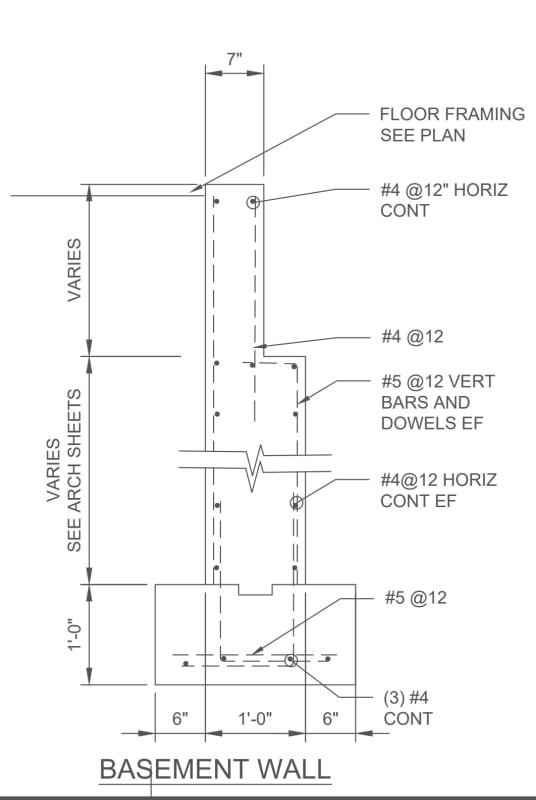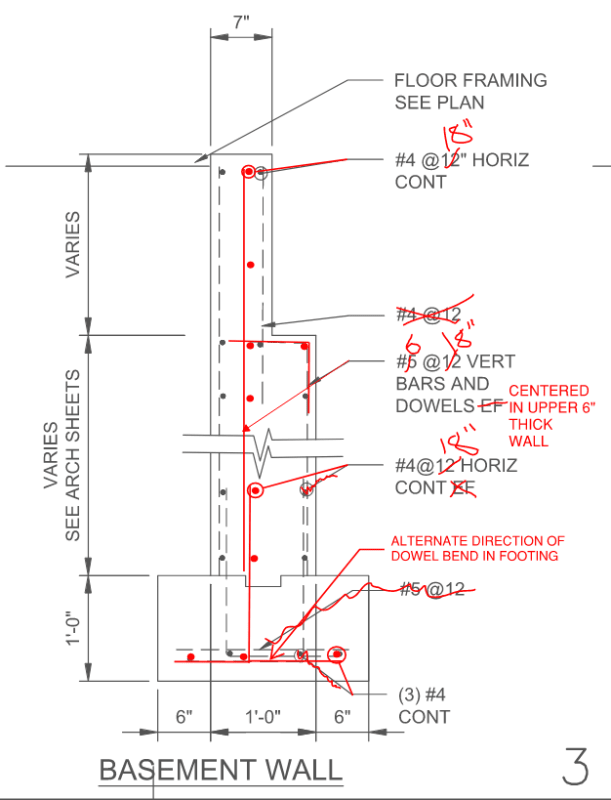I have a contractor suggesting my basement wall reinforcing is excessive. I'm sure it is in terms of strength but for temp and shrinkage crack control and meeting code I'm not so sure. It's a 12" thick wall (mainly for a 2x6 wall with a brick veneer. It's 11'-0" from top of wall to top of basement slab and retaining a maximum of 8 feet of soil. I"m showing 2 layers of #4 bars @ 18" OC each way. The contractor wants to use a single layer of an unspecified bar size @ 24" OC each way.
My concern is controlling cracks over time and the threat of water infiltration.
Correct me if I'm wrong but because the wall is greater than 10', the prescriptive design in IRC is not applicable which means that the max 18" OC spacing from ACI applies.
I also wonder about the ACI provision about walls 10" thick and greater requiring 2 layers of reinforcing (except basement walls). Why the exception for basement walls. And is it reasonable to use 2 layers in my case -- a residential basement wall 12" thick?
My concern is controlling cracks over time and the threat of water infiltration.
Correct me if I'm wrong but because the wall is greater than 10', the prescriptive design in IRC is not applicable which means that the max 18" OC spacing from ACI applies.
I also wonder about the ACI provision about walls 10" thick and greater requiring 2 layers of reinforcing (except basement walls). Why the exception for basement walls. And is it reasonable to use 2 layers in my case -- a residential basement wall 12" thick?


